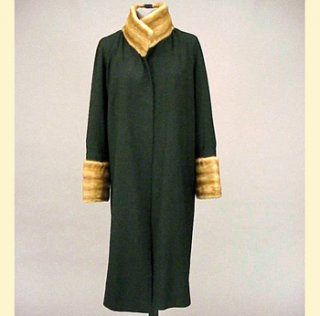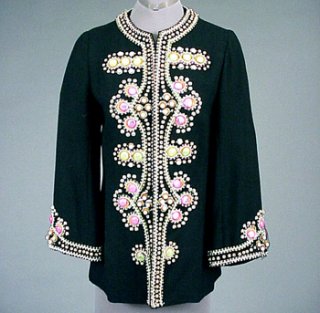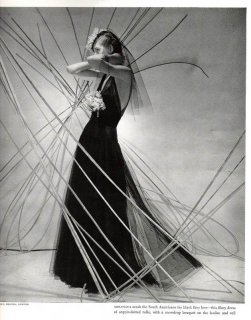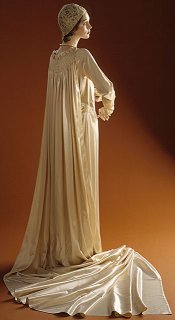SomethingElse
Press escape to continue.
- Joined
- Mar 22, 2007
- Messages
- 5,445
- Reaction score
- 0
Edward Molyneux was an Irishman of Huguenot ancestry. He never exaggerated, always maintained sight of the elegant heights to which couture could soar. He was the designer to whom a fashionable woman would turn in the 20's and 30's when she wanted to be absolutely "right" and not predictable. He mixed with the aristocracy as well as café society of between-the-wars Paris and gained insight into the needs of women in that era of change and freedom. He had the surest of hands, dressed Gertude Lawrence for the stage and Princess Marina of Greece for her wedding to the Duke of Kent.
Molyneux was born in London in 1891 and his first ambition was to be a painter. His sketch for an evening dress won a contest sponsored by Lucile (Lady Duff Gordon) who hired him but this was interrupted by the war when he was wounded and lost an eye. In 1918 he opened his salon in Paris and from the beginning, his style was extreme simplicity and perfect taste. Success came quickly and he moved into a larger maison and opened several branches. In addition to couture, he designed furs, lingerie, hats and perfume notably his "Numero Cinq". He dressed the most elegant women right up to the outbreak of World War II and escaped from Paris to London in 1940.
Molyneux was known for conservative clothes but never staid or matronly. His typical customer was tall, thin and intelligent, with long slim legs and usually in the late twenties or thirties. His streamlined backless white satin evening dress with silver-fox furs thrown over the shoulder, became the symbol of 30's elegance. He was best known for his wonderful handling of navy blue and black, whether an easy plated skirt-suit or a slip-like evening dress.
In The 30's the pure Molyneux look fully emerged. His soft velvet evening coats fell to the floor in a single unbroken line, his dresses with matching three-quarter length coats had a graceful fluidity. By the end of the 30's he experimented with a newly narrowed waist, one that later Dior called the "New Look". In the 30's Irish designer John Cavanagh worked under Molyneux in Paris, and gained valuable experience which stood him in good stead when he later opened his own house.
After the war, Molyneux returned to Paris but it was not the same, his health particularly his eyesight, began to fail, so in 1950 he closed his Paris and London establishments and retired to Jamaica. He traveled widely and resumed his painting and in 1965 collaborated with his nephew with a ready-to-wear operation called "Studio Molyneux" He died in 1974 at the age of 83. He will be remembered for his streamlined 30's designs, clothing from a decade he helped to shape.
1923 Japanese silk

The straight simple dresses of the mid-1920s lent themselves particularly well to bold large-scale surface decoration, embroidered, woven or printed. Worn for Ascot with a wide brimmed silk trimmed hat, this smart summer outfit represented the height of sophistication with its nod to exoticism. It has been cut as a long simple tube, providing a blank canvas for Molyneux's striking Japanese printed silk, and apart from the dropped waist, the image is uninterrupted by seams or fastenings. For evening or cocktail parties, beading was a more typical decoration for twenties dresses, again using the flat front of the dress as an ideal display medium.
Molyneux (1891-1974) trained under Lucile (Lady Duff Gordon) and opened his own fashion house in Paris in 1919. His simply cut, elegant designs earned him a place as a favourite among royals. He was also highly respected in the fashion world, and no less a figure than Christian Dior considered him to be one of his greatest predecessors, and a world class couturier.
manchestergalleries.org





























